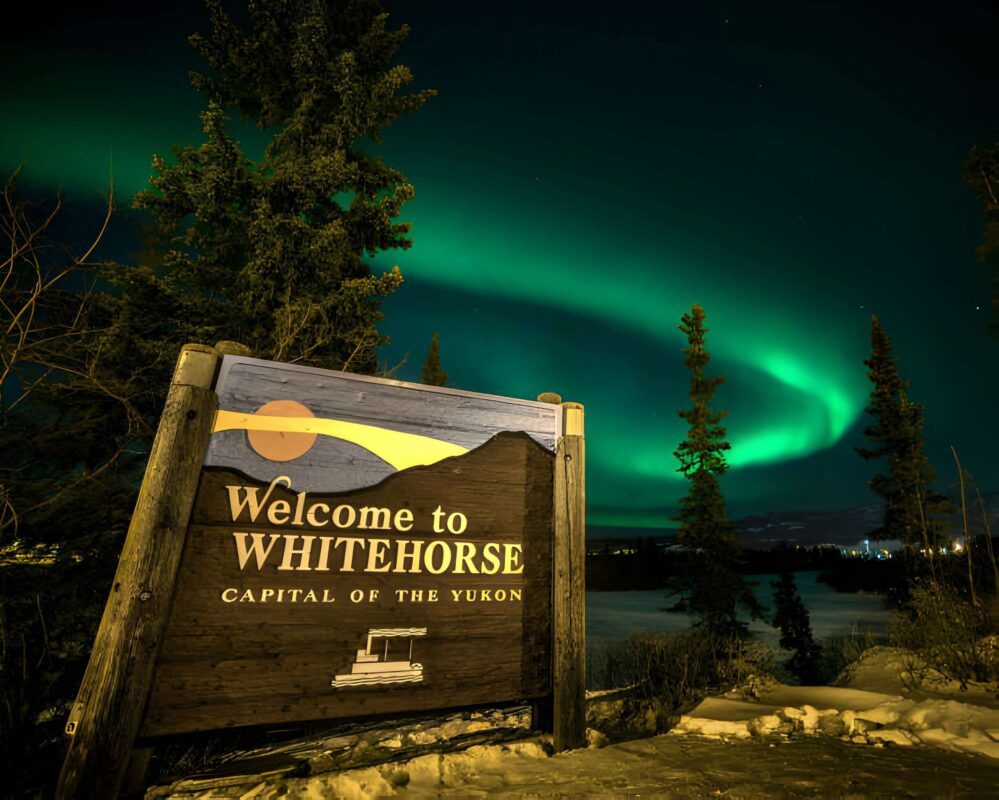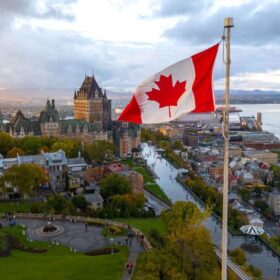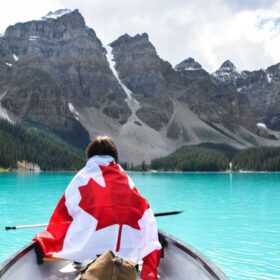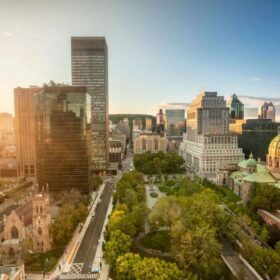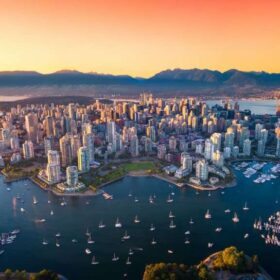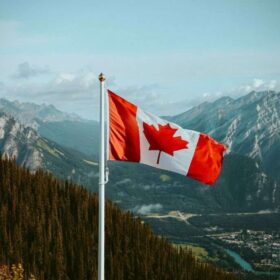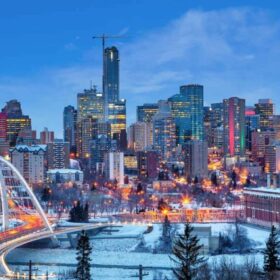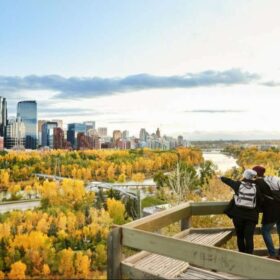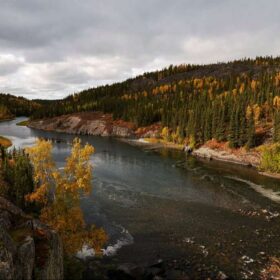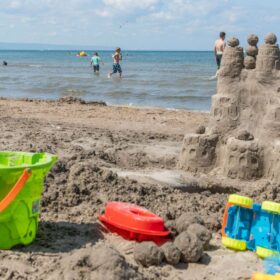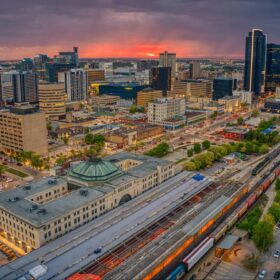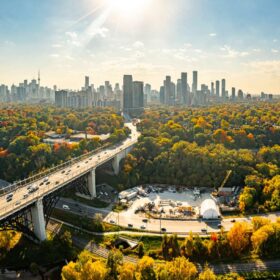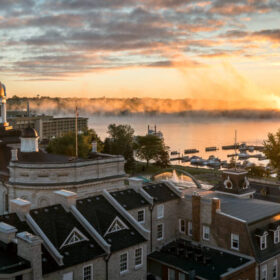Similar to Dawson City, Whitehorse owes its establishment to the Klondike Gold Rush of 1897. After enduring the challenging and at times perilous journey from Skagway over White Pass, gold prospectors navigated Miles Canyon and Whitehorse Rapids before reaching the wealth of Dawson.
The initial arrivals led to the formation of a small settlement on the river’s right bank, opposite the current town. The turbulent, frothy waters of the rapids, resembling white steeds, inspired the settlement’s name – Whitehorse. The rocks that once created the rapids now peacefully lie beneath the waters of Schwatka Lake, formed when the river was dammed in 1958.
With a population of 25,000, comprising over half of Yukon’s total population, Whitehorse has evolved into a significant center for arts and culture in recent years. As the compact yet vibrant territorial capital, it serves as a northern hub, situated at the crossroads of the Alaska and Klondike Highways, just approximately 80 kilometers north of the provincial border with British Columbia.
Discover the best attractions in this captivating city with our list of the best places to visit in Whitehorse.
1. SS Klondike National Historic Site
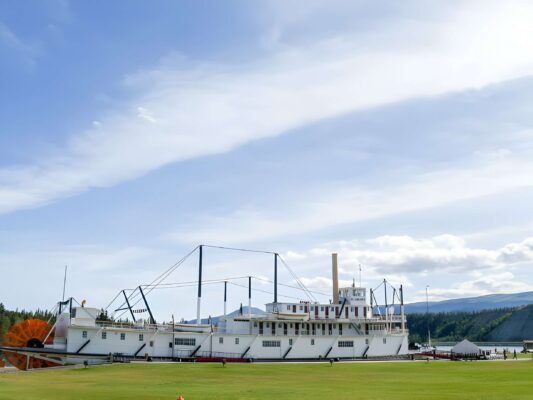
Decades after the gold rush, the sternwheelers on the Yukon River continued to serve as the region’s primary mode of transportation. The SS Klondike II, the largest sternwheeler in the entire fleet, held a prominent position.
It wasn’t until 1955 that the SS Klondike II, constructed in 1936 using the engines, boiler, and other parts salvaged from the original vessel that sank in 1937, ceased its role in transporting ore from the silver mines in Mayo to Whitehorse for subsequent shipment by road.
Presently, the meticulously restored and upgraded sternwheeler stands as a popular tourist attraction, greeting visitors along the Yukon embankment in the town center. Guided tours are offered, and for those opting for a self-guided experience, make sure to pick up a self-guided tour booklet.
2. MacBride Museum of Yukon History
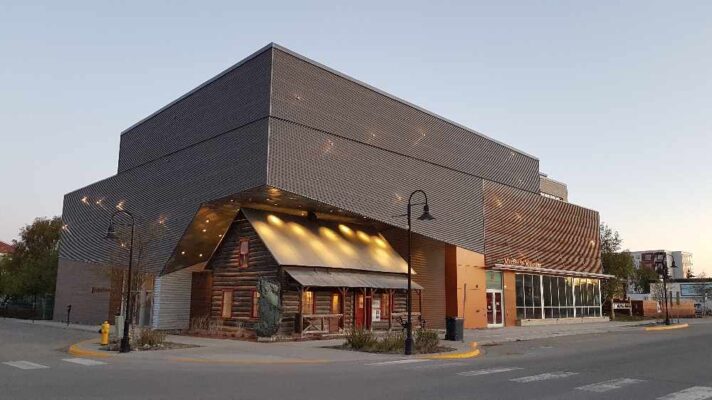
The MacBride Museum of Yukon History boasts an extensive collection of artifacts and photographs from the gold rush era, along with exhibits dedicated to the Yukon First Nations. Prominent displays feature a log cabin once owned by Sam McGee, the subject of a famous ballad by Robert Service, the “Bard of the Yukon.” The museum also showcases various pieces of old machinery and implements, complemented by an intriguing exhibit on the wildlife of Yukon.
A noteworthy feature is the original Whitehorse telegraph office, an integral part of the newer museum building constructed around (and over) it. For those visiting in the summer months, exploring opportunities to obtain tickets for the museum’s popular music festival is recommended.
As part of the MacBride’s collection, the MacBride Waterfront Trolley serves as a delightful family-friendly attraction appealing to all ages. The star attraction is a fully restored 1925 trolley, now, almost a century after its construction, once again taking passengers for a scenic ride along the Whitehorse waterfront.
3. Yukon Wildlife Preserve
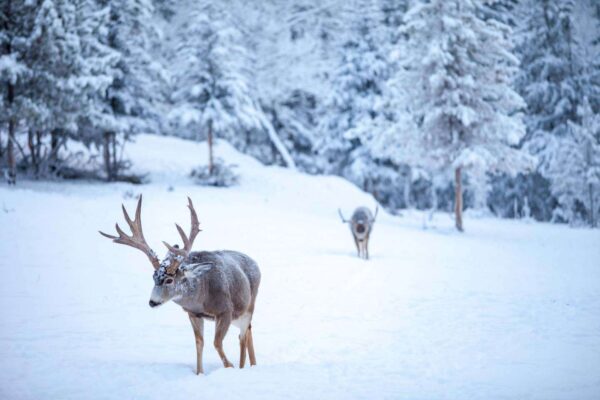
Located just a 30-minute drive from downtown Whitehorse, the Yukon Wildlife Preserve offers guided tours for visitors to witness the diverse array of creatures that inhabit the region. Among the captivating species are moose, muskoxen, mountain goats, wood bison, mule deer, woodland caribou, elk, and two types of thin horn sheep (Dall’s and Stone’s sheep).
Encompassing over 350 acres, the preserve features distinct habitats, ranging from wetlands to cliffs, enabling the animals to live—and be observed—in their natural surroundings. Additionally, the preserve has established itself as a wildlife rehabilitation center.
For those seeking an alternative to guided bus tours, an excellent five-kilometer hike is available through the trail network that loops around the site. The preserve is especially enjoyable to visit in winter, with many of the same trails being used for snowshoeing and cross-country ski adventures.
If traveling with children, the preserve offers a variety of engaging programming, including summer camps and nature workshops.
4. Watch the Northern Lights
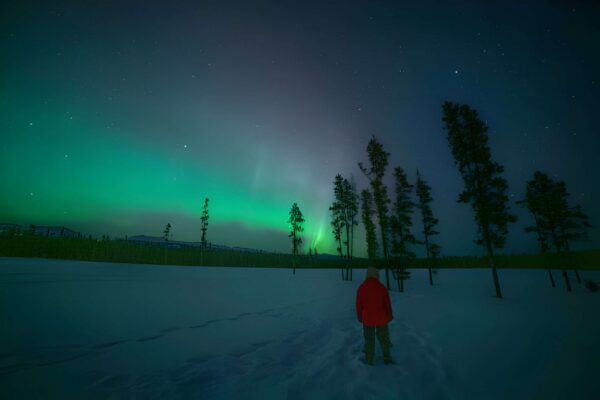
If you can schedule your trip to Whitehorse between January and early April, you can experience the breathtaking Aurora Borealis, or Northern Lights, without even leaving the city. However, for the best view of this extraordinary celestial phenomenon, it is advisable to move away from the city lights and venture into the hills.
5. Yukon Transportation Museum
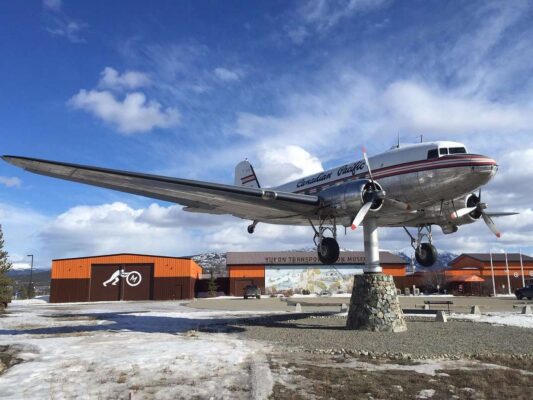
The Yukon Transportation Museum in Whitehorse showcases various early modes of transportation in the region, featuring items such as snowshoes, dog sleds, stagecoaches, boats, aircraft, and vehicles utilized during the construction of the Alaska Highway.
A notable highlight includes the sister plane of Lindbergh’s Spirit of St. Louis, known as the Queen of the Yukon. Additionally, the museum offers insights into the personal stories of Yukon ingenuity and self-sufficiency. Visitors can enjoy excellent 40-minute tours with booking, and there are also kids’ programs available. An on-site gift shop adds to the overall experience.
6. Miles Canyon
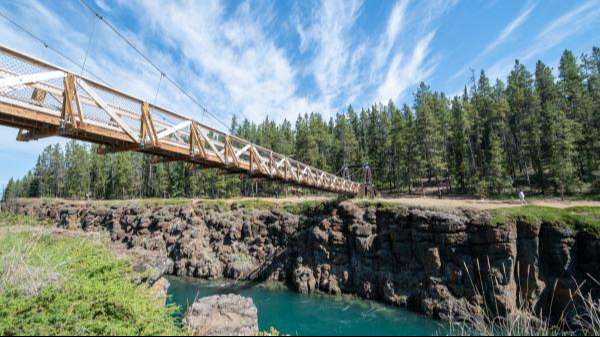
Miles Canyon, once a hazardous stretch of the Yukon River, was tamed by a hydroelectric dam. Situated where the river was carved through a segment of basalt rock, these rapids posed a challenge for gold prospectors, leading to the loss of supplies and lives as they attempted to navigate the turbulent waters. The issue was resolved with the construction of a railroad section that bypassed the treacherous area.
Today, the region offers delightful hiking trails and a picturesque setting for exploration. Visitors can also enjoy a visit to the site’s 25-meter-long suspension bridge, constructed in 1922, providing excellent views of the river. Moreover, this attraction is conveniently just a few minutes’ drive from downtown Yellowknife.
7. Emerald Lake
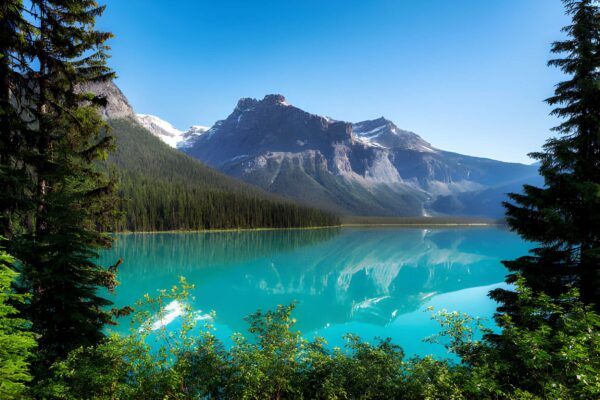
If you’re traveling south towards Carcross or seeking a delightful afternoon excursion on a sunny day, make sure to visit Emerald Lake. On a calm day, this stunning lake showcases an incredible green hue. Photographers will find themselves captivated as they try to capture the reflections of the surrounding hills in its crystal-clear waters. For the best picture-perfect moment, aim to arrive early in the day.
Emerald Lake is located just over 60 kilometers down Highway 2, with an estimated travel time of about 40 minutes. If you’re coming from Whitehorse, the lake will be on your right.
8. Old Log Church Museum
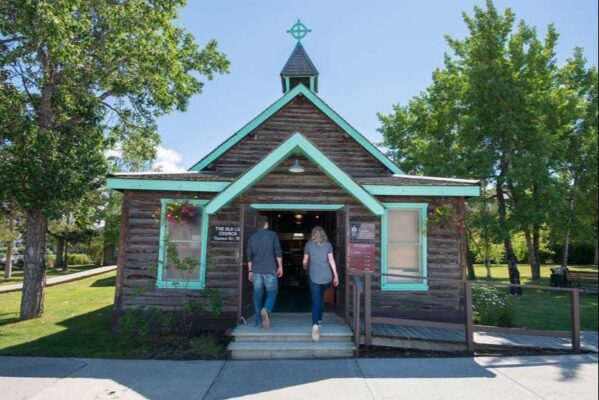
Constructed in 1900 and recognized as one of the earliest Anglican churches in Yukon, the Old Log Church Museum provides a glimpse into the introduction of the Christian faith in the territory. Key features encompass exhibits and artifacts highlighting the pioneer days and the significance of religion during this era, with daily guided tours offered throughout the summer.
These tours typically explore various themes, such as the history of the Anglican Church in Yukon and the contributions of women during this period. Specialized tours for children are also offered.
9. Takhini Hot Springs
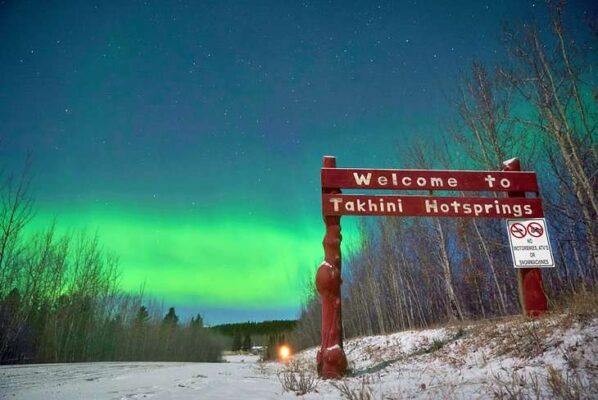
Situated just a brief drive from downtown Whitehorse, the Takhini Hot Springs are a worthwhile destination and a popular spot for both locals and visitors. Renowned for their therapeutic and curative properties, coupled with being odorless, these hot springs have served as a human retreat for centuries.
In contemporary times, the experience has been refined, offering guests a choice between two pools, each set at different temperatures. The hot pool presents water at 42 degrees Celsius (4.5 degrees cooler than its surface temperature), while the cool side maintains a comfortable 36 degrees Celsius. For an enhanced visit, consider lodging at the on-site hostel or utilizing the campgrounds available.
Under new management and undergoing significant renovations, the hot springs are scheduled to reopen in 2021.
10. Whitehorse Fishladder & Hatchery
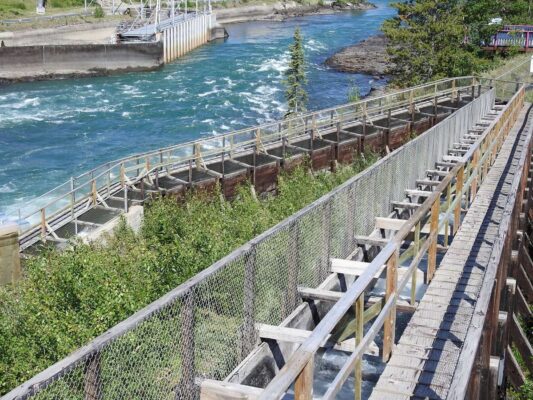
Once the ice begins to break up in the spring, Chinook salmon swiftly migrate upstream from the Pacific Ocean to their Yukon River spawning grounds. Some even make the extensive journey to Whitehorse, covering about 3,000 kilometers in approximately 60 days. Visitors have the opportunity to witness this remarkable spectacle as these majestic fish ascend the Whitehorse Fishladder and Hatchery, a facility provided for them to navigate past the Whitehorse Rapids hydroelectric dam.
As the longest structure of its kind globally, the site also features an interpretation center offering ample information about the fish and their journey. Additionally, there are underwater windows and viewing platforms for spectators to enjoy the experience.
In close proximity, the fish hatchery, established in 1984, plays a crucial role in safeguarding and replenishing the Yukon’s stocks of Chinook and other fish species, including arctic char and rainbow trout. Following the visit, seafood enthusiasts can indulge in a wide variety of salmon delicacies at local restaurants in Yellowknife.
11. Yukon Beringia Interpretive Centre
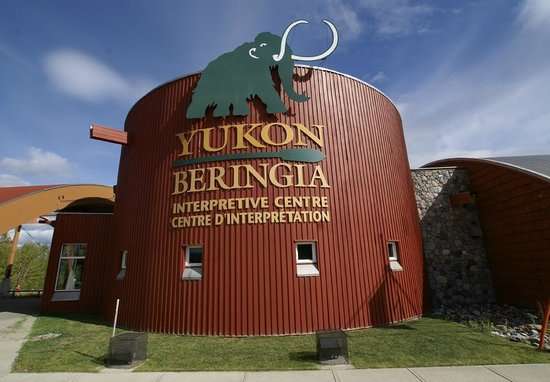
Beringia is thought to be the pathway taken by the initial people who migrated from Asia to North America, and it was recognized as a region inhabited by massive animals and extensive open plains. The Yukon Beringia Interpretive Centre vividly portrays the history, geographical events, and culture of the area through fossils, First Nation exhibits, murals, and dioramas.
Free 30-minute guided tours are provided and come highly recommended, offering an overview of the facility, its collections, and research. Those seeking a more extensive and in-depth tour can also be accommodated.
12. Yukon Government Building
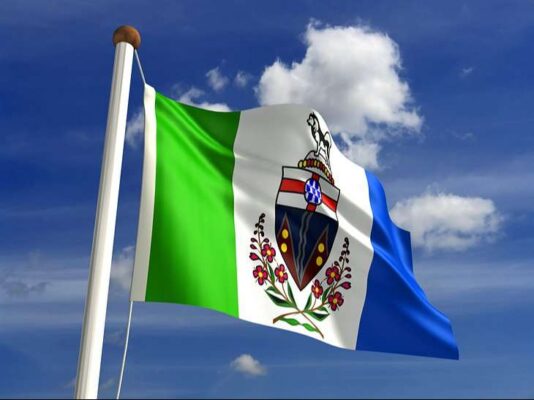
Adorned with tapestries and paintings created in Yukon, the Territorial Government Building is a worthwhile destination if you’re exploring Whitehorse on a self-guided walking tour (it’s frequently included in guided tours as well). Many of the public areas can be appreciated during a quick stopover. Of special note is the expansive stained-glass mural in the lobby, a feature that deserves particular attention.
Situated across the street from the tourist information center, the building is conveniently accessible for a brief visit.
Accommodation: Where to Stay in Whitehorse: Best Areas & Hotels
FAQs
Q: What is the best time to visit Whitehorse?
A: The ideal time to visit Whitehorse depends on your preferences. Summer offers pleasant weather for outdoor activities, while winter showcases the city’s snowy charm.
Q: Are there budget-friendly options in Whitehorse?
A: Absolutely! Whitehorse offers a range of budget-friendly options, including free or low-cost activities and economical dining choices.
Q: How can I ensure my safety during my trip to Whitehorse?
A: Stay informed about the weather, have emergency contacts on hand, and follow local guidelines to ensure a safe and enjoyable visit.
Q: What are some hidden gems in Whitehorse recommended by locals?
A: Locals often recommend exploring hidden gems like lesser-known attractions and unique spots that may not be in typical tourist guides.
Q: How can I customize my itinerary for a trip to Whitehorse?
A: Tailor your itinerary by balancing sightseeing, adventures, and relaxation, aligning the plan with your interests and preferences.

